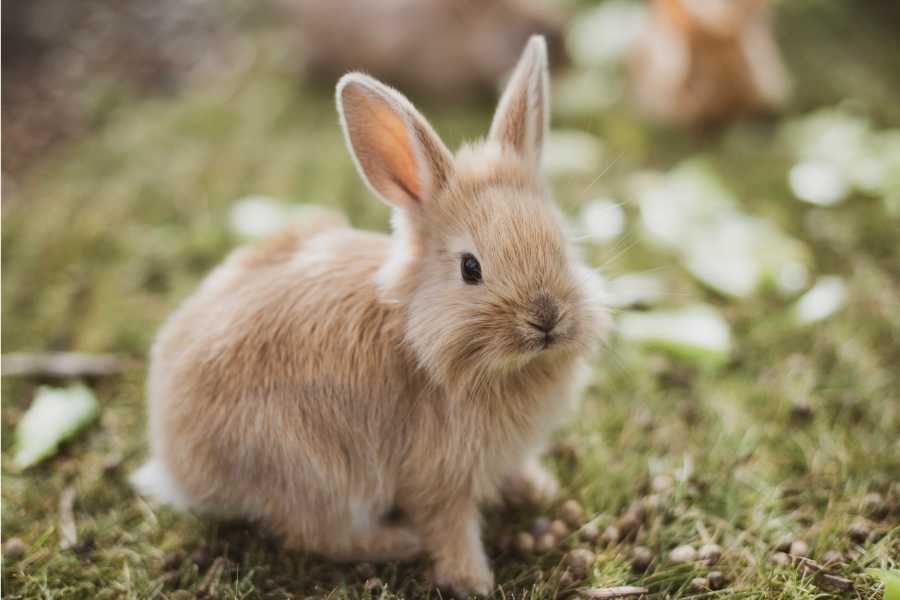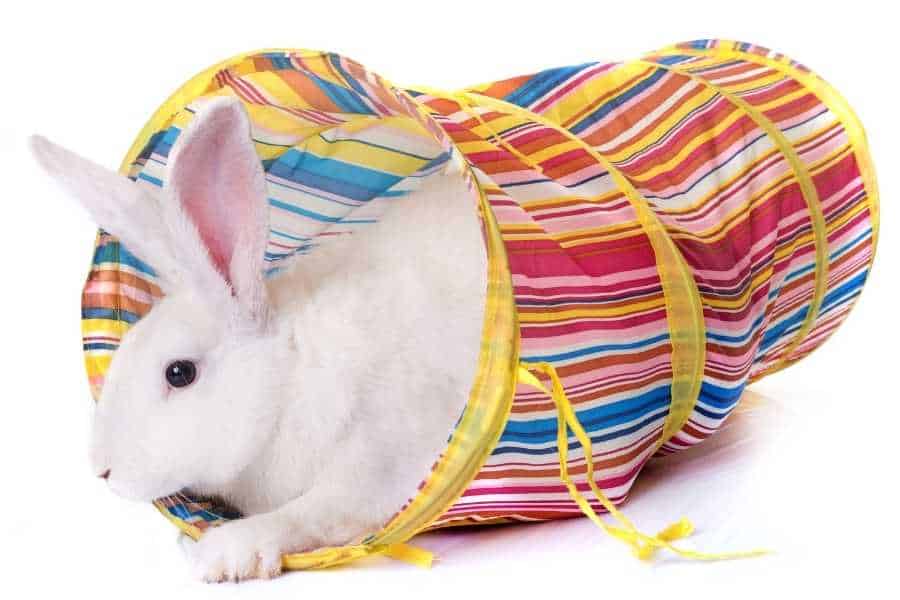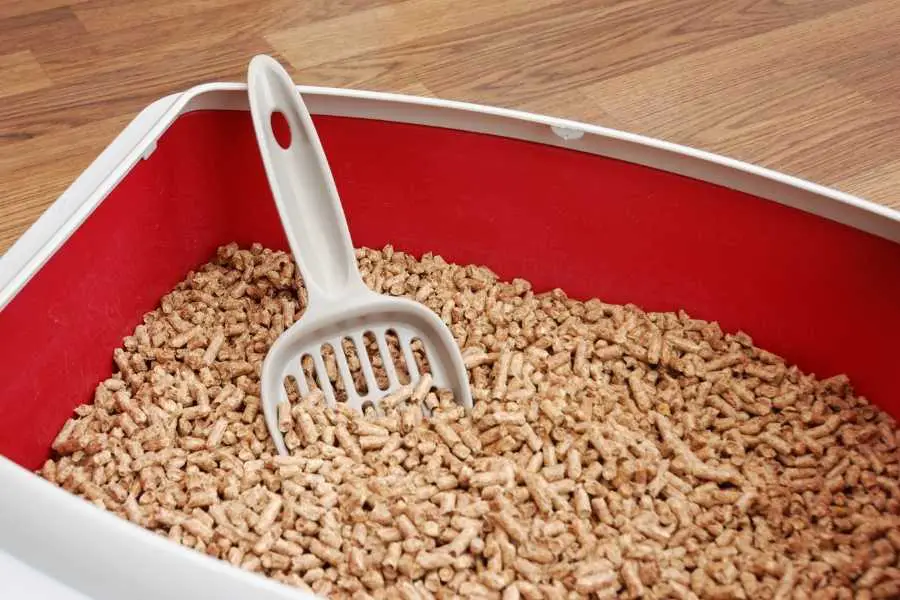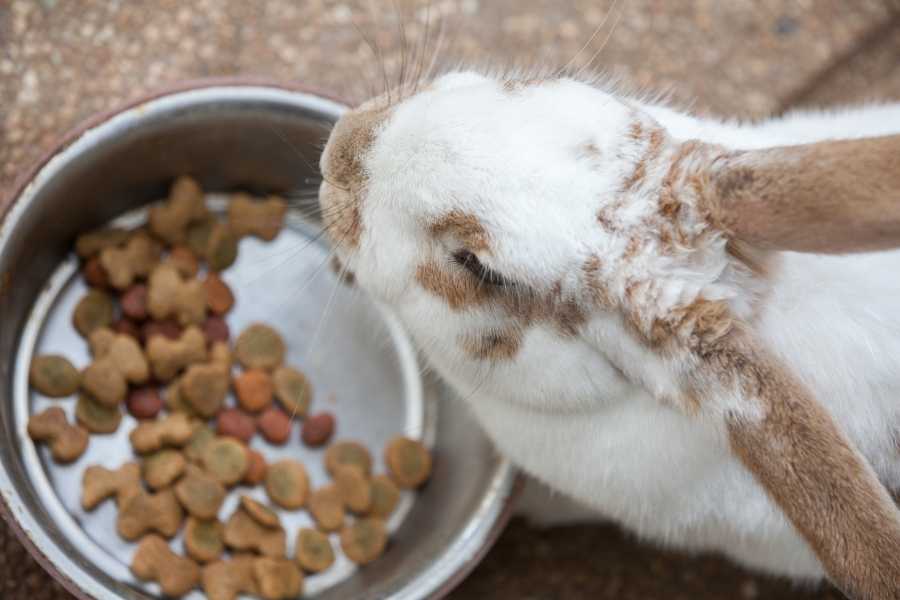I can’t think of one person who doesn’t think that bunnies are one of the cutest animals. They are quite social, playful, quiet, and they don’t take too much space. Rabbits are a great choice for pets, but like all living beings, they require special care.
Before you make a decision about taking a rabbit for a pet, you need to consider few things. Your bunny will want, and need, certain care to live a healthy and happy life.
In the rabbit care guide below we will answer your questions about living conditions, proper care, grooming, and what a healthy bunny should eat.
Is a bunny the right pet for you?
Before making any decision, you need to have an answer to this question. Bunnies can create strong bonds with their owners, and although they are cute, they have specific necessities. Unlike hamsters, they have a longer life span, up to ten years, so you will need to make a long-term commitment.
You will need to check on the ball of fur at least once a day. Furthermore, they need routine vet care, and properly taking care of them in the long run, might be costly, and time-consuming.
Nevertheless, if you decide to care for a bunny, you will be greatly rewarded with their wonderful friendship.
Then, choose the right bunny for you…
There are many domesticated rabbit breeds to choose from, but mixed breeds can give as much love. The most important thing to consider is choosing a healthy rabbit. When you are looking at potential pets, be aware of any signs of health problems that can cause problems in the future.
One place you may want to consider looking for a bunny is at your local animal shelter. Usually, they would have rabbits of all ages, and some people prefer adult rabbits for pets.
If you decide to get one from a good pet shop, make sure that it has been weaned from its mother at the age of six to eight weeks.
Certain breeds need specific care, space, dietary requirements, and groom standards. For example, the lionhead rabbit has a mane of fur around its face, and it requires more frequent grooming than other breeds.
Mini lop bunnies tend to get ear infections, and dental issues, more often than others.
The bottom line is when making a decision ensure you have the time and resources to give that ball of love the care it needs and deserves.
Home is where the bunny’s heart is
You chose the perfect rabbit for you and your family, but it is not time to take it home yet. The next step is to ensure that your home is ready to be the bunny’s new home.
Indoors or outdoors, that is the question…
Although you may instinctively think that the outdoors is the best and most natural habitat for rabbits, that’s true only for their wild relatives.

Domesticated rabbits are sensitive to high temperatures. Moreover, even in your backyard, they won’t be safe because at the slightest sound or sight of a wild animal they could suffer a heart attack.
So, the safest place for your ball of fur would be indoors.
Roaming around or playing in a cage?
Whether you decide to get a cage for your bunny or not, you need to choose a space in your home for the little one. This area needs to be an active one where most of the family members are present for the majority of the time, and the area’s temperature has to be regulated.
If you provide a cage, you still need to let your rabbit out for a few hours a day. Bunnies enjoy running, jumping, and exploring places, so this will be a great time to play with the ball of love.
In addition, ensure the space for the bunny is rabbit-proof and safe for it to play. You will need to cover all cords, wires, and electrical plugs in all rooms where the little one might go. Rabbits like to chew, and if it starts chewing your electrical cords it can injure itself or die.

In relation, do research on poisonous plants for rabbits. Certain house plants and flowers can poison the bunny if it chews on them. Some of those plants include aloe, Calla lilies, azalea, and tulips, so protect your pet by putting away anything that may cause it harm.
One way you can make sure your bunny doesn’t go to a dangerous area is by using baby gates to separate it and block off its access to these spaces.
Secure an area large enough for the rabbit to have space to exercise, explore and interact with its family.
Comfy habitat for a comfy life
If you decide to get additional habitat for your new furry friend, then you will need to consider its needs when choosing the type of habitat.
Once you choose a space in your home for the little one and its habitat, do your research on the variety of living spaces for rabbits.
Large wire rabbit cages or dog crates are the most common and practical habitats which give enough space for the bunny to move around. Also, you can place the water bowl and the hay feeder inside.
Puppy pens are another option for a habitat, but you will need to put a chair mat or seagrass mat on the ground to protect your floor. You can place all additional accessories inside the pen together with a litter box.
Rabbit condos are an ideal option for habitat because they can be made from metal wire, or if you prefer, you can create one from wood or reusing some old furniture. Furthermore, they offer more height, so that means more space for moving around. You could also include a litter box in the same space.
Whichever habitat you choose, make sure it has enough space for the adult size of your ball of fur. The accommodation needs to be five times the size of your rabbit. Your new family member should be able to stand on its hind legs without any interference or bumping its head, and it should be able to perform at least three hops in one direction.
If the cage is made of wire, place a wooden bottom because your furry friend shouldn’t be sleeping on wires, and wires will be hard on its little feet. Also, since rabbits tend to spray when they urinate, you may want to get a urine guard and put it around the bottom.
Getting a habitat that is spacious enough, won’t be only a benefit for the rabbit, for you as well. It will be easier to clean it, arrange it, and your bunny will be able to go in and out of the cage without any difficulty. Additionally, it will make sharing your home with the new member of your family much easier.
However, no matter how big its cage is, the little ball of love will need some time for roaming outside its habitat.
Let’s not forget the bedding
The best bedding for rabbits will depend on your bun’s age. There are different types of bedding starting from hay-based, wood shavings, recycled paper, but whichever you choose it needs to be checked daily and you need to remove it if it’s soiled.
During hot weather, soiled bedding can attract flies that will lay eggs on the bedding and it can cause maggots to attack your bunny’s fur or cavity. This can be very harmful to your little one.
Litter box and litter training
Just like kitties, bunnies can easily learn where to do their business. Ensure you have a litter box in the cage. Place it in a corner (you can get a triangular one), put paper, some bedding, and some hay because rabbits like to snack while in the litter box.
When you start to liter train your bun, begin with enclosed spaces where the litter box is placed. If you notice that there is some poop outside of the litter box, clean it, and put it inside the box. Furthermore, when you notice there is urine outside, then you can clean it and mop it with a piece of paper towel, and place the paper in the litter box. This will teach it that there is a specific place for doing its business.
If you are letting your bunny roam free then in the beginning put several litter boxes around the rooms. You will notice which corner it prefers because it will use it more frequently.
Cat litter can cause serious health problems to your bunny, so avoid using them. Instead, go for litters made of paper, wood pulp, or other natural products which are more absorbent.

One thing you need to practice when litter training your rabbit is patience. Young bunnies will take some time to learn where what is. In relation, if decide to get an older rabbit, it will need to break old habits, especially if it hasn’t been litter trained.
Healthy diet, healthy bunny
One of the most important things in providing the best care for your rabbit is a well-balanced diet. Unlike other pets, you can’t feed your bun food craps or cat/dog food. There are certain items that have to be included in your bunny’s diet so that it can have a happy and healthy life.
Hay for a happy bun
The first item on that list would be hay. Hay has to be available twenty-four hours a day so that the little one has access to it constantly. Furthermore, hay helps the rabbit’s digestive system and it gives the fiber it needs to prevent serious health issues.
However, the type of hay you choose is of utmost importance. Young bunnies, from six to eight months, can eat alfalfa hay, but after that, you need to switch to timothy or oat hay. Alfalfa has more calories, protein, and calcium, which isn’t good for an adult bunny. You can find either of these types of hay in pet stores, local farms, or feed stores.
Nothing can substitute fresh fruits and veggies
Fresh fruits and vegetables are the next items on the list which are a must. Most of the veggies that you should give your new friend are leafy green veggies like lettuce, collard greens, arugula, cilantro, dandelion leaves, endive, mint, and basil. Additionally, you can add some carrot and radish tops, broccoli leaves, and chopped celery. Ensure that everything is clean, and serve two to four cups a day per five pounds of weight. You could split the amount and give it half in the morning, half in the evening.

Fruits can be given as treats and occasionally. Moreover, carrots can be given as treats as well. Although we may believe that they are the basis of a rabbit’s diet, carrots are quite starchy. Apples (seedless and without stems), strawberries, plums, papaya, and blueberries, are fruits that you can give to your bun. Grapes, raisins, and bananas are more sugary, and your bunny can enjoy them only once in a while.
Maybe some pellets
If you decide to include pellets in your bun’s diet, choose the best one. But, pellets should serve only to supplement a rabbit’s diet, not to replace veggies or hay. Moreover, the quantity you should serve your ball of fur is from one-eighth to a quarter of a cup per five pounds of the bunny’s weight. You can spread this quantity over two servings a day. Timothy-based or alfalfa-based pellets are the best choice because others may contain corn, seeds, and other high caloric foods which won’t contribute to a healthy and balanced diet.
Is the bunny thirsty?
A good quantity of freshwater should be always available for your rabbit. It needs to be changed at least once a day and you can pour it in a bottle or a bowl which should be cleaned on a daily basis. A water bowl that is a little heavier would be a better choice to prevent tipping and spilling.
Avoid giving your bunny these…
Rabbits have a sensitive digestive system, so certain foods need to be avoided. Some of these include cabbage, corn, potatoes, iceberg lettuce, beets, beans, tomatoes, onions, seeds, grains, rhubarb, chocolate, candy, and most foods that we would eat. The best thing to do if you aren’t certain about food is to consult with a veterinarian.
It’s time to play
Bunnies enjoy playing and they are quite active and curious creators. To satisfy its need for activity, you will need to provide a variety of entertainment for your ball of fur. This will keep your rabbit out of trouble and will provide an opportunity for some bonding time.
Toys are very important for your bun’s mental and physical wellbeing. Tubes that it could run through and hide in are a great choice for playtime.
In addition, getting a few safe things that your rabbit can chew on will keep it very amused. Bunnies love chewing and to avoid it chewing on some hazardous items, provide it with rings and balls made of willow wood. Also, you could use cardboard items that you would normally throw away, and things like toilet paper rolls.
However, be careful with objects that have loose parts or sharp edges that can harm your bunny.
Completing the rabbit care guide
You’ve picked the right bunny for you, you‘ve set up its habitat with all necessary accessories and toys, you’ve provided the best food for a balanced diet, and now it’s time to give the care that your bun deserves.
Bunnies are gentle creatures and need to be treated with proper caution.
Pick up with care
Let’s start with learning how to pick up your new friend. One hand goes underneath the front side of the bun, and the other underneath the backside. Lift the little one gently and bring it close to your body. Avoid lifting your rabbit by the stomach, by its ears, or letting its body hang free.
Be patient, practice, and don’t rush, because it may not enjoy being picked up in the beginning.
Give yourself, and the little one, time to get accustomed to each other. In time you will learn about its preferences.
What about grooming standards?
Unlike cats, bunnies don’t vomit or cough up hairballs. Your rabbit will need your assistance with brushing to remove loose hair.
Clean your rabbit’s ears with a soft cloth. If its ear canals have wax or debris, take the little one to the vet instead of trying to remove it yourself.
Furthermore, trimming your bun’s nails is something you will need to do as well. They grow continuously and it’s important to trim them every four to six weeks. If you don’t feel confident about trimming them, then take your new friend to the vet or a groomer.
If you notice that your rabbit is scooting its bottom on the ground or that there is a foul smell, probably its scent glands need cleaning. The scent glands are near the anus, so just use a damp cotton swab to clean the area. However, if you want, you can always ask your vet to do it.
Rabbits shouldn’t be soaked in water. But, if it has diarrhea, you will need to clean and bathe its bottom. Wash the area with a little bit of warm water and then dry it with a soft towel.
It’s time for a check-up
As with any other pet, rabbits need regular vet visits and proper medical care as well. However, not all veterinarians have experience with bunnies. Ensure that the vet you choose has treated rabbits before and is rabbit-savvy.
You should think about spaying or neutering. It has many health and behavior benefits such as reducing aggression and territory-marking behaviors in males, eliminating potential risks of testicular and reproductive cancers.
Cleaning the habitat
Your bunny doesn’t have any cleaning skills, so this will be on you as well.
Every day check the cage for any chewed-up cardboard or leftover food. Tidy and clean up daily, including the food and water bowl, and the litter box.
Every week or so, you will need to clean the cage thoroughly. When you do this, your bun needs to be out of the habitat and in a safe space.
Take out everything from its home, throw away used bedding and leftovers. Wash and scrub the cage with a mixture of hot water and vinegar. Avoid using chemicals for cleaning because they can be hazardous for the bun.
Once the habitat is dry, you can put fresh bedding, refill its food bowl, water bowl, and litter box.
Are you ready for your new family member?
Although extremely cute, bunnies shouldn’t be treated as toys. So, if you decide you want to care for one, ensure it is treated with special care and supervision, especially if you have small children in your family.
If they are offered the care they need, your bunny will reward you and your family with a life full of love and joy.
